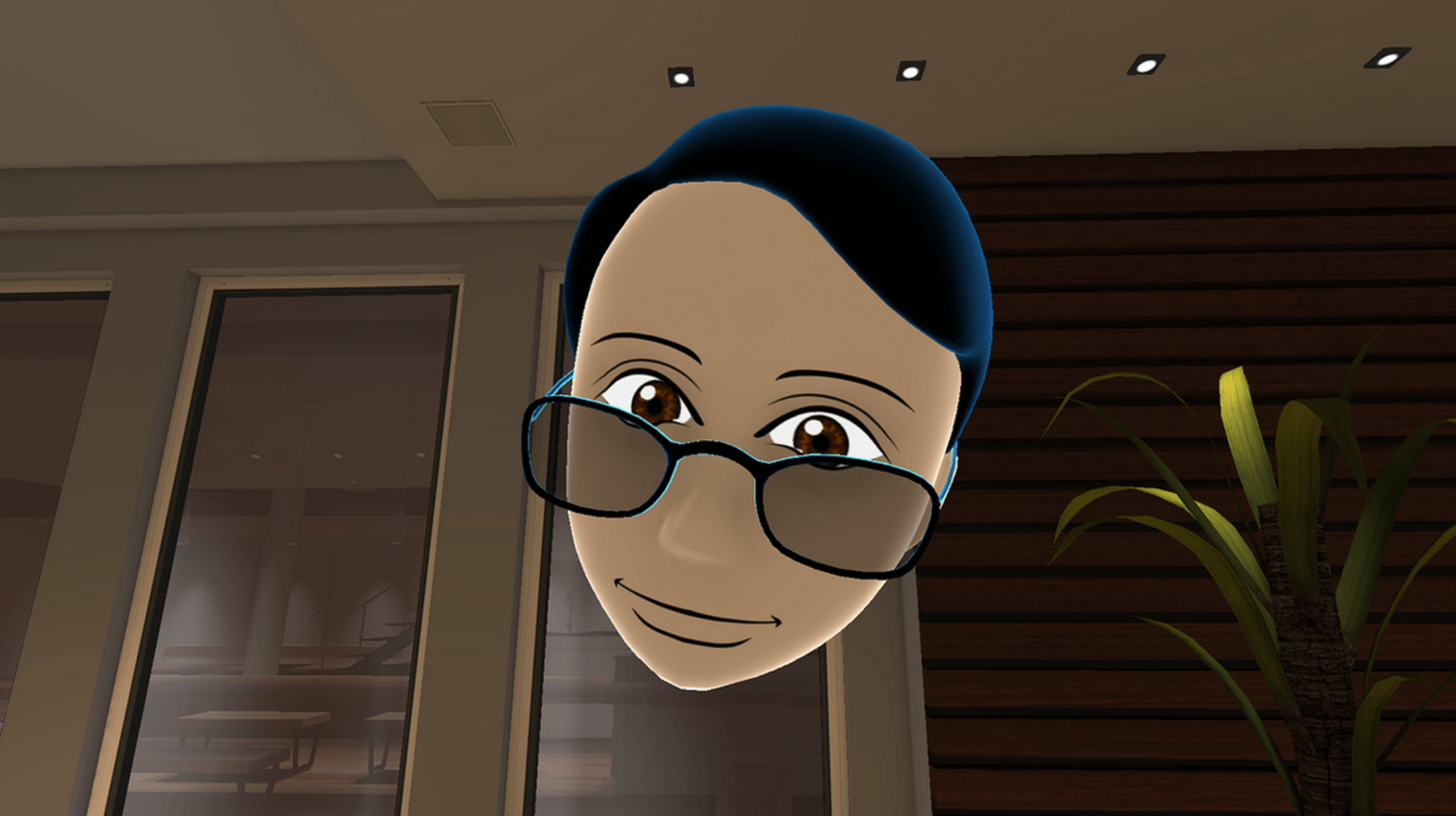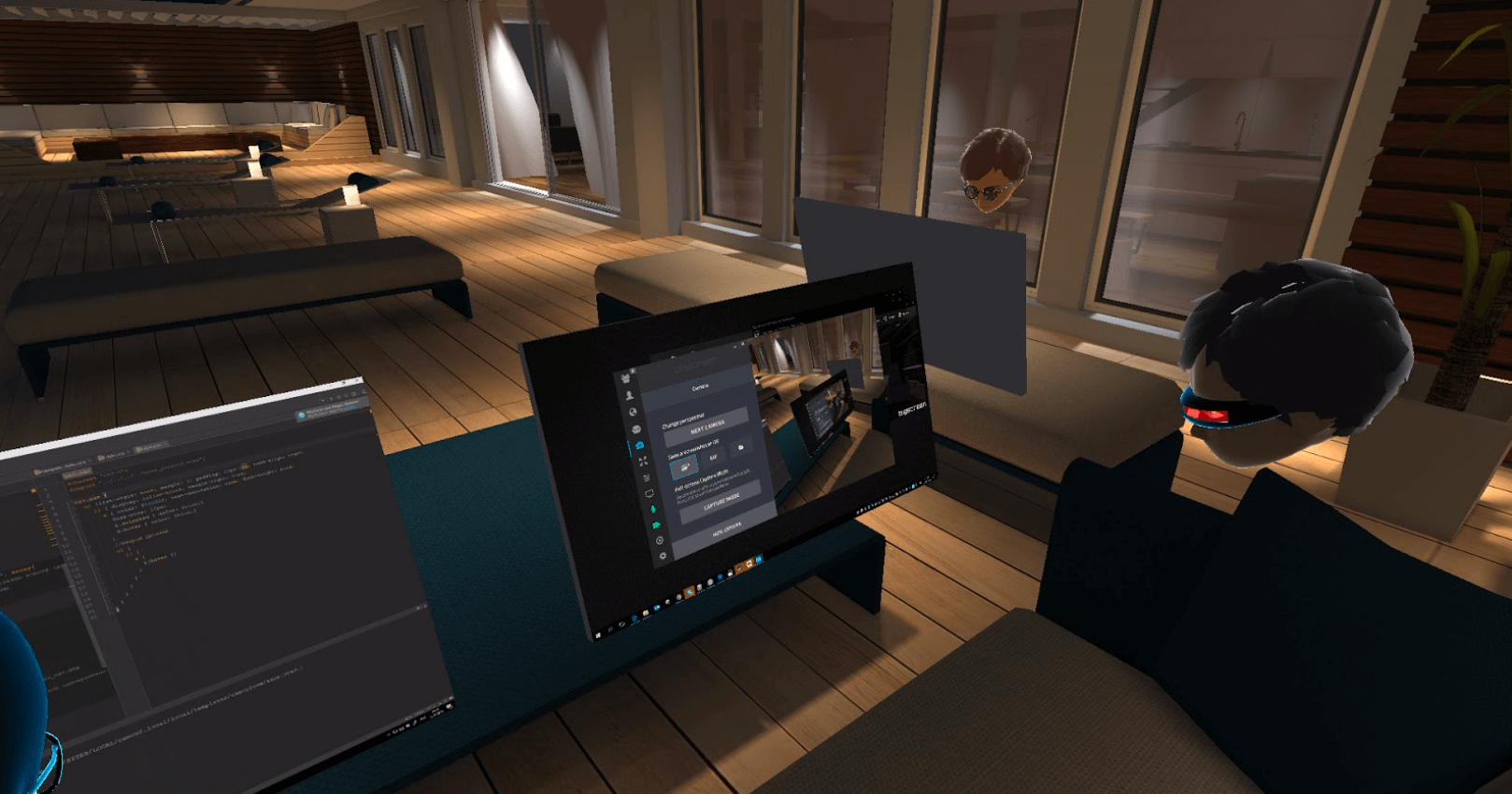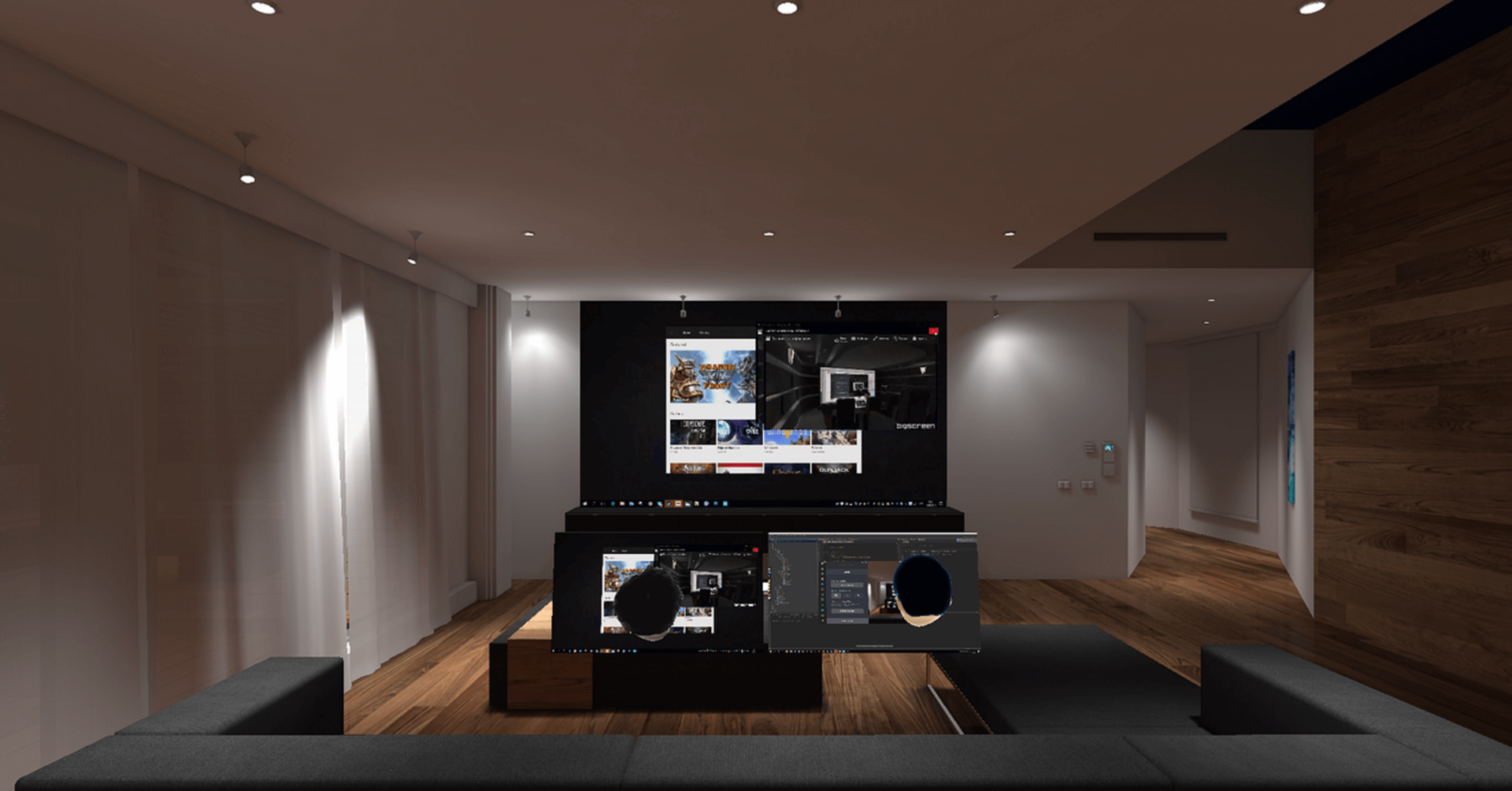How will virtual offices affect our lives?
Meet Michael.

Michael works in an office in downtown Chicago. His office is located in a building that looks like an architectural marvel. The inner walls are made of azure marble, granite floors in the corridors, and in the office, under your feet, beach sand. Yes, beach sand. Calm music circulates gently throughout the building.
There is one important thing I forgot to mention.
At the moment, Michael lives in St. Petersburg. But he has the opportunity to work in the same office with his colleagues, thanks to virtual reality technology.
')
Remote employees, like Mikhail, can now work in the same space with their colleagues from around the world, thanks to evolving virtual reality technology, the market, which by 2025 will be $ 80 billion, according to Goldman Sachs forecasts .
Mark Zuckerberg believes that VR will become as common as text messaging and supports his faith with investments, investing more than $ 250 million in VR .
The adoption of this technology by the masses is slower than, for example, PCs or smartphones, however, when the costs of using the technology decrease and people get closer acquainted with it, VR will probably become the biggest event since the start of mass PC production in 1981.
“Virtual reality was once a dream of science fiction. But the Internet, too, was once a dream, like computers and smartphones. "- Mark Zuckerberg
According to TrendForce analysis, VR will not be limited to the gaming community and will slowly expand its scope to other areas. One of these areas is the virtual workspace.
In order to discover the virtual world you need VR glasses. The first truly comfortable VR turned out to be the Oculus Rift, but, to date, more than a dozen other companies have released their VR glasses.
In 2014, Facebook acquired Oculus Rift. The inventor of Oculus was 21-year-old Palmer Lucky.
At 18, Palmer Lucky has assembled the world's largest collection of VR glasses.

Most glasses were too bulky and not practical for daily use. Lucky was very unhappy with the image quality that the virtual reality monitors were transmitting; he was not satisfied with the low contrast, long latency and small viewing angle.
His inability to find what he wanted eventually led him to invent his own VR glasses, which became Oculus Rift.
Virtuix Omni is a product that supports Palmer Lucky. It works with Oculus Rift and other compatible VR. The Virtuix Omni is a peripheral equipment in the form of an omni-directional treadmill for interacting with virtual reality. To simulate movement in the Omni uses a slippery platform and special shoes that reduce friction. With the help of a support belt, a person is held in a fixed ring, absorbing the player's weight. Initially, Virtuix Omni was created for the gaming industry, but later found its application in the field of health and in the military industry.
Also pay attention to HTC Vive, Playstation VR, Samsung Gear VR and hybrid VR-AR from Microsoft called HoloLens.
VR is gradually integrating into a wide variety of industries, from medicine to real estate sales. But virtual jobs have a number of advantages and disadvantages.
Soon, traditional videoconferencing may be in the past, since with VR you will be able to look your interlocutors in the eye and become more effective in terms of communication.
Does a potential investor need to travel long distances in order to evaluate the object? Or, for example, choose a hotel for recreation. VR tours can save a lot of time and money.
Now let's look at the pros and cons of using VR for work.
Let's start with the benefits:
And cons:
Obviously, not everyone will like to work in an office center. One way or another you will have a huge selection of different options.
The virtual office does not have to be in the business center on the 85th floor. It can be both in the old English castle and on the ocean. Virtual offices allow you to have unlimited creative control over your surroundings.
Mikhail Bazarov and Pavel Khoroshilov live in different cities, but they work in the same office. They are one of the first who decided to transfer their workplaces to a virtual office and successfully combine remote work, virtual reality technology and the possibility of real-time broadcast services. Below, you can find a video with an example of the implementation of a virtual office.


Michael works in an office in downtown Chicago. His office is located in a building that looks like an architectural marvel. The inner walls are made of azure marble, granite floors in the corridors, and in the office, under your feet, beach sand. Yes, beach sand. Calm music circulates gently throughout the building.
There is one important thing I forgot to mention.
At the moment, Michael lives in St. Petersburg. But he has the opportunity to work in the same office with his colleagues, thanks to virtual reality technology.
')
Remote employees, like Mikhail, can now work in the same space with their colleagues from around the world, thanks to evolving virtual reality technology, the market, which by 2025 will be $ 80 billion, according to Goldman Sachs forecasts .
Mark Zuckerberg believes that VR will become as common as text messaging and supports his faith with investments, investing more than $ 250 million in VR .
The adoption of this technology by the masses is slower than, for example, PCs or smartphones, however, when the costs of using the technology decrease and people get closer acquainted with it, VR will probably become the biggest event since the start of mass PC production in 1981.
“Virtual reality was once a dream of science fiction. But the Internet, too, was once a dream, like computers and smartphones. "- Mark Zuckerberg
According to TrendForce analysis, VR will not be limited to the gaming community and will slowly expand its scope to other areas. One of these areas is the virtual workspace.
VR glasses
In order to discover the virtual world you need VR glasses. The first truly comfortable VR turned out to be the Oculus Rift, but, to date, more than a dozen other companies have released their VR glasses.
In 2014, Facebook acquired Oculus Rift. The inventor of Oculus was 21-year-old Palmer Lucky.
At 18, Palmer Lucky has assembled the world's largest collection of VR glasses.

Most glasses were too bulky and not practical for daily use. Lucky was very unhappy with the image quality that the virtual reality monitors were transmitting; he was not satisfied with the low contrast, long latency and small viewing angle.
His inability to find what he wanted eventually led him to invent his own VR glasses, which became Oculus Rift.
Virtuix Omni is a product that supports Palmer Lucky. It works with Oculus Rift and other compatible VR. The Virtuix Omni is a peripheral equipment in the form of an omni-directional treadmill for interacting with virtual reality. To simulate movement in the Omni uses a slippery platform and special shoes that reduce friction. With the help of a support belt, a person is held in a fixed ring, absorbing the player's weight. Initially, Virtuix Omni was created for the gaming industry, but later found its application in the field of health and in the military industry.
Also pay attention to HTC Vive, Playstation VR, Samsung Gear VR and hybrid VR-AR from Microsoft called HoloLens.
Virtual reality is the future that has come!
VR is gradually integrating into a wide variety of industries, from medicine to real estate sales. But virtual jobs have a number of advantages and disadvantages.
Soon, traditional videoconferencing may be in the past, since with VR you will be able to look your interlocutors in the eye and become more effective in terms of communication.
Does a potential investor need to travel long distances in order to evaluate the object? Or, for example, choose a hotel for recreation. VR tours can save a lot of time and money.
Now let's look at the pros and cons of using VR for work.
Let's start with the benefits:
- Improved communication
Working in one workspace is more convenient than remote work in the traditional sense, since you will always have the opportunity to look to a colleague at the monitor or bring the subject of discussion on the big screen.
Most of the conflicts in the workflow are due to misunderstanding. Improving communications is directly proportional to the reduction of conflicts, since you are able to understand the subtle nuances. Effective communication is vital for maintaining a positive morale and increasing productivity in the workplace. - Cost reduction
No need for renting premises, without any bills for utilities, as well as the maintenance of the office and so on. Instead of flying across the country to attend conferences or trainings, you can attend them from the comfort of your own home office. For small companies, such savings can significantly reduce costs. As a result, more resources can be spent directly on product development. - Atmosphere
Thanks to the ability to adjust the environment to your mood, you will reduce staff turnover and increase productivity. An employee with a satisfied work environment will always be productive. - No geographical barriers
People from completely different points of the world will be able to work in the same work space.
And cons:
- Insulation
The Internet has definitely brought communication to a whole new level, but research has shown that more and more people suffer from social exclusion and VR can only aggravate this process. A business in which everyone works remotely and with different schedules will lack cohesion in the team. - Customer trust
If the client finds out that you do not have a real office, and the whole team is working remotely, he or she may assume that you are less reliable than offline competitors. Such misconceptions can be detrimental to the business reputation of a company. - No keyboard
For many, the lack of a keyboard inside virtual reality can be a problem, so you need to master the technique of touch typing before you get to work.
Virtual office in action
Obviously, not everyone will like to work in an office center. One way or another you will have a huge selection of different options.
The virtual office does not have to be in the business center on the 85th floor. It can be both in the old English castle and on the ocean. Virtual offices allow you to have unlimited creative control over your surroundings.
Mikhail Bazarov and Pavel Khoroshilov live in different cities, but they work in the same office. They are one of the first who decided to transfer their workplaces to a virtual office and successfully combine remote work, virtual reality technology and the possibility of real-time broadcast services. Below, you can find a video with an example of the implementation of a virtual office.

Source: https://habr.com/ru/post/313044/
All Articles